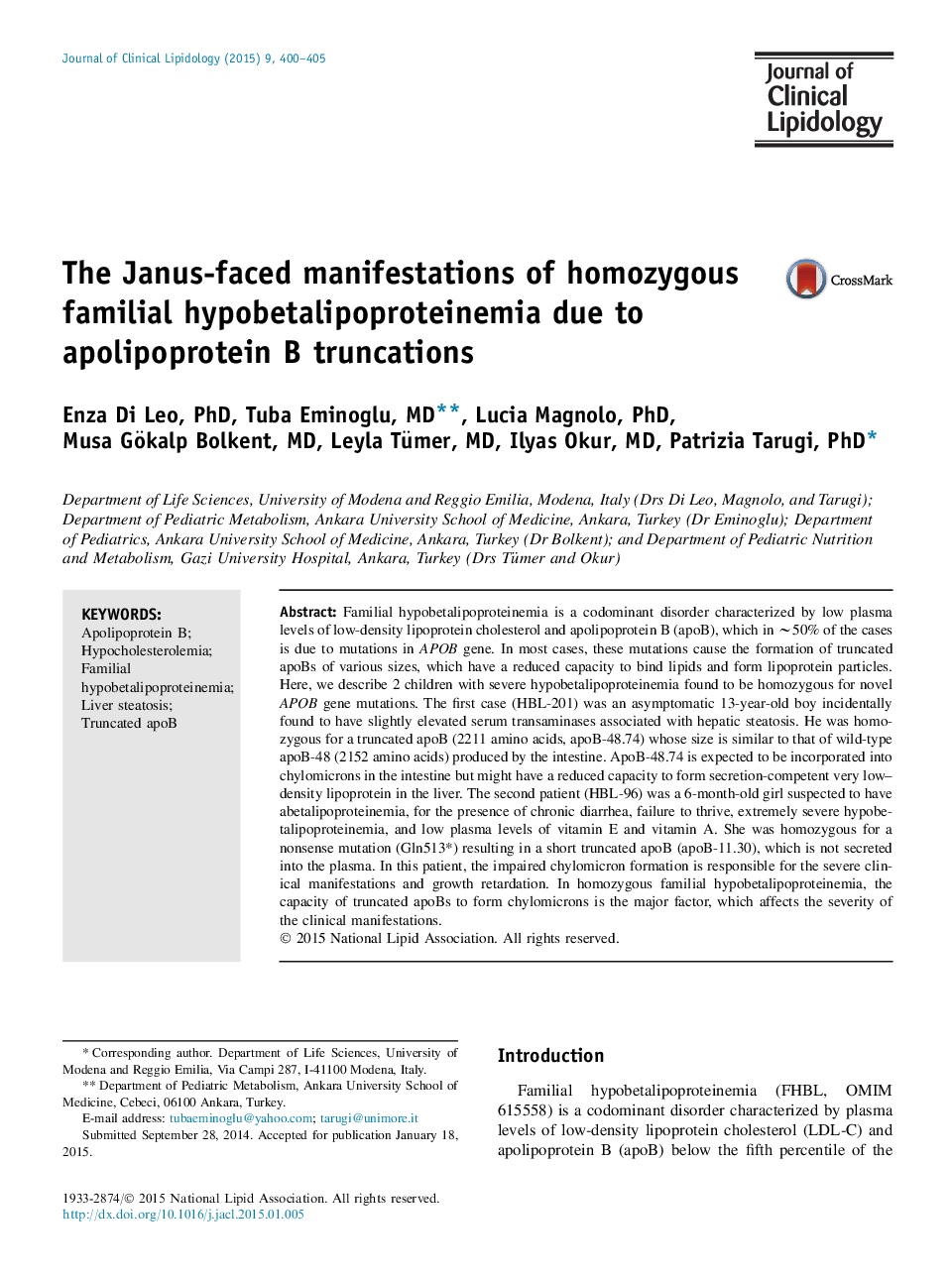| کد مقاله | کد نشریه | سال انتشار | مقاله انگلیسی | نسخه تمام متن |
|---|---|---|---|---|
| 5985565 | 1178777 | 2015 | 6 صفحه PDF | دانلود رایگان |

- We describe 2 familial hypobetalipoproteinemia children homozygous for novel APOB gene mutations.
- These mutations result in truncated apolipoproteins B (apoB-48.74 and apoB-11.30).
- apoB-48.74 carrier was asymptomatic but had mild fatty liver disease.
- apoB-11.30 carrier presented growth retardation, lipid malabsorption, and fatty liver.
- The severity of homozygous familial hypobetalipoproteinemia phenotype is related to the size of truncated apoBs.
Familial hypobetalipoproteinemia is a codominant disorder characterized by low plasma levels of low-density lipoprotein cholesterol and apolipoprotein B (apoB), which in â¼50% of the cases is due to mutations in APOB gene. In most cases, these mutations cause the formation of truncated apoBs of various sizes, which have a reduced capacity to bind lipids and form lipoprotein particles. Here, we describe 2 children with severe hypobetalipoproteinemia found to be homozygous for novel APOB gene mutations. The first case (HBL-201) was an asymptomatic 13-year-old boy incidentally found to have slightly elevated serum transaminases associated with hepatic steatosis. He was homozygous for a truncated apoB (2211 amino acids, apoB-48.74) whose size is similar to that of wild-type apoB-48 (2152 amino acids) produced by the intestine. ApoB-48.74 is expected to be incorporated into chylomicrons in the intestine but might have a reduced capacity to form secretion-competent very low-density lipoprotein in the liver. The second patient (HBL-96) was a 6-month-old girl suspected to have abetalipoproteinemia, for the presence of chronic diarrhea, failure to thrive, extremely severe hypobetalipoproteinemia, and low plasma levels of vitamin E and vitamin A. She was homozygous for a nonsense mutation (Gln513*) resulting in a short truncated apoB (apoB-11.30), which is not secreted into the plasma. In this patient, the impaired chylomicron formation is responsible for the severe clinical manifestations and growth retardation. In homozygous familial hypobetalipoproteinemia, the capacity of truncated apoBs to form chylomicrons is the major factor, which affects the severity of the clinical manifestations.
Journal: Journal of Clinical Lipidology - Volume 9, Issue 3, MayâJune 2015, Pages 400-405